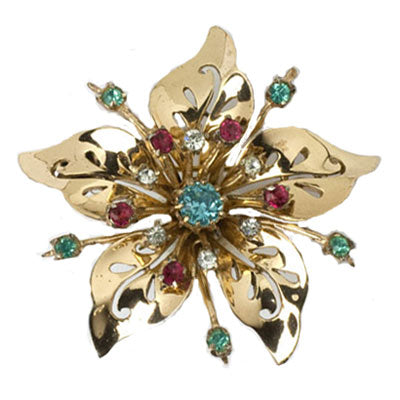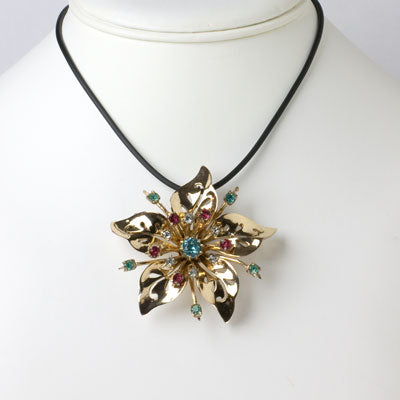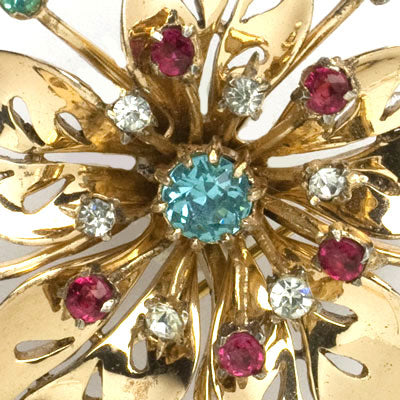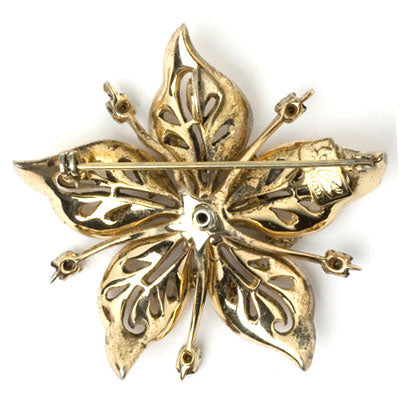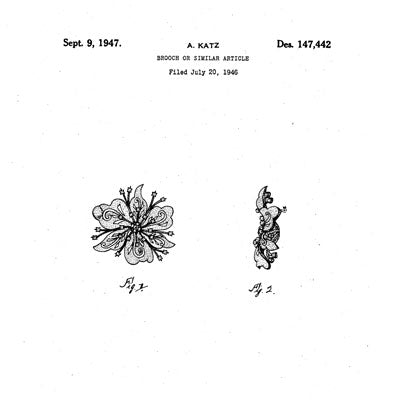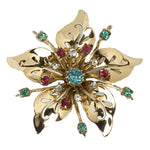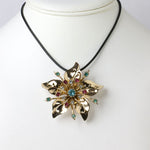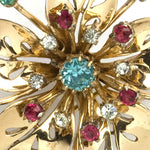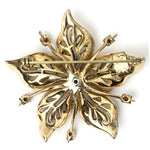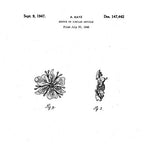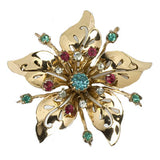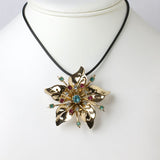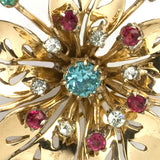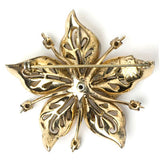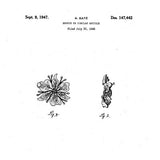Gemstone & Vermeil Flower Brooch/Pendant
MAKER: Coro
SIZE: 2 1/4" diameter
CONDITION: Excellent
DATE: c.1946-1947 (based on design patent and use of sterling, per Brunialti)
MARKS: "Coro" (in script) with Pegasus and "STERLING" on rectangular cartouche
REFERENCE: Design patent D147,442 issued to Adolph Katz in 1947 (application filed in 1946)
This vintage brooch pendant is a substantial 1940s ‘2-for-1’ jewel. The gold-plated sterling silver flower is embellished with aquamarine- and ruby-glass stones and diamanté accents. The petals of the flower have decorative piercing and are tilted and slightly curled, giving it lots of life. Designed by the remarkable Adolph Katz, this three-dimensional piece is a fine example of the Retro Modern style. One photo shows the pendant on a black cord, but you may prefer a gold chain or a velvet ribbon. A 17-inch, 2mm black rubber cord with a stainless steel twist lock (just like the one in the photo) is included with this purchase. Scroll down to see similar brooches, each with a diamanté center (one has the pendant loop), by the same maker. Note that any bright color variations in metal are only camera reflections.
FREE SHIPPING to the United States and Canada
Why Buy Vintage Costume Jewelry?
One reason is that it’s environmentally friendly. Resale fashion and vintage jewelry has become a preferred sustainable and affordable shopping choice by today’s discerning fashion and eco-conscious consumer.
Another major reason is the quality. Although vintage costume jewelry was made for all levels of the marketplace – from dime stores to high-end fashion boutiques and jewelry stores – you will find only the best pieces here. They were well-designed and carefully made to last. The manufacturers represented here used only the finest materials – glass stones and beads from Bohemia, Austria, and France, and faux pearls from France and Japan. Settings were primarily sterling silver, gold-filled, or base metals heavily plated with gold, silver, or rhodium. Stones were hand-set, and pieces were hand-finished.
The northeastern part of the U.S. was the center of the industry, with the largest companies located in Providence, Rhode Island by the end of World War II. During the Depression, the quality of costume pieces climbed to new levels when many jewelers and craftsmen had to switch to this segment of the industry. In addition, it attracted many skilled workers who fled the political situation in Europe for the U.S. For these reasons, designs and manufacturing techniques rivaled those employed in the making of fine jewelry.
A third reason to buy costume jewelry is its uniqueness. Having survived for so many decades in such wonderful condition and having been selected for their aesthetic quality, the pieces you’ll find here are unlikely to be found elsewhere.
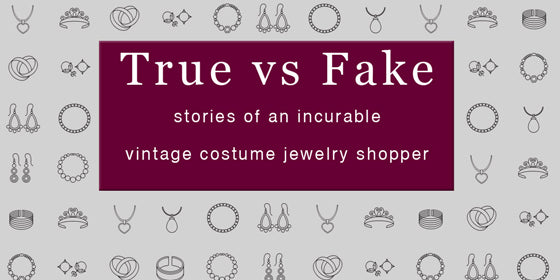
True vs Fake - how to shop vintage costume jewelry with confidence
Barbara Schwartz, a noted costume jewelry historian, is the author of "True vs Fake" , an in-depth blog series providing examples of how vintage costume jewelry can be accurately attributed. She also shares tips on how to avoid being duped into buying misidentified vintage costume jewelry.

